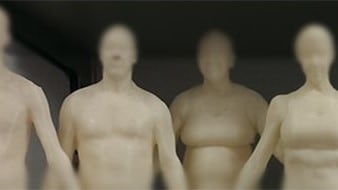Key points
- Anthropometric measurements can help determine degree of protection against dangerous exposures.
- Illness or injury may occur if workers’ normal anthropometric measurements are not considered in workplace designs and personal protective equipment.

Definitions
Anthropometry - the science that defines physical measures of a person's size, form, and functional capacities
Functional capacity - the ability to complete certain work tasks based on human size or form
How it works
Anthropometric measurements are used to study the interaction of workers with tasks, tools, machines, vehicles, and personal protective equipment (PPE). These measurements are often used to determine the degree of protection against dangerous exposures, long term or short term.
Many workers experience the benefit of applying anthropometric measurements. For example:
- Construction workers benefit from more than one size of fall harness.
- Truck drivers have a more ergonomic design of truck cabs.
- Firefighters have improved PPE for best fit.
- Police officers have improved uniform fit for more body types.
Impacts
Technological development in recent years has advanced the basic science of human size and shape studies in 3-dimensional (3D) forms. Computer-generated human models are now available for anthropometric analysis. These advances have made it possible to improve workplace and protective equipment design, and anthropometric fit within complex systems.
Safety risks
Designs that are incompatible with normal anthropometric measurements of a workforce may result in unwanted incidents. For example:
- The misfit of a heavy equipment cabin to a worker may create operator blind spots that expose workers on foot to struck-by injuries.
- Inadequate length or configuration of seatbelts may lead to non-use of seat belts, which affect post-crash survivability.
- When PPE does not fit correctly it cannot sufficiently protect workers from health and safety exposures or hazards.
What the data shows
Existing data on the size and shape of industrial workers is limited. There is a lack of anthropometric data for the general worker population. Safety researchers have generally relied on data drawn from studies of military personnel. Most of these studies took place during the 1950s to 1970s.
However, substantial anthropometric variability exists among the general worker population. They are quite different from the average military population. Industrial workers like agricultural, truck driver, and firefighter workforces, are also anthropometrically different from the average civilian population.1
Resources
Datasets
Firefighter Anthropometry Datasets
U.S. firefighter anthropometric information can be used to update specifications for fire apparatus and firefighter protective equipment.
U.S. Emergency Medical Technicians (EMT) anthropometric information can be used to improve the workspace design of ambulance patient compartments for safe and effective performance.
Anthropometry of Law Enforcement Officers
U.S. Law Enforcement Officers (LEO) anthropometric information can be used to design improvements of vehicle console space, entering or leaving the vehicle, and LEO body-worn equipment can result in reduced LEO fatigue, pain, or injury.
Articles
- Hsiao, H., Long, D., Snyder, K. (2002). Anthropometric differences among occupational groups. Ergonomics, 45(2), 136-152.